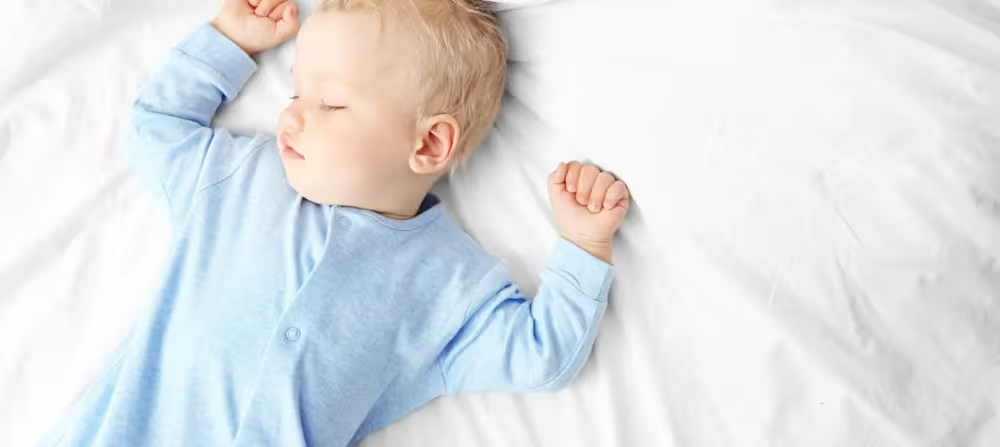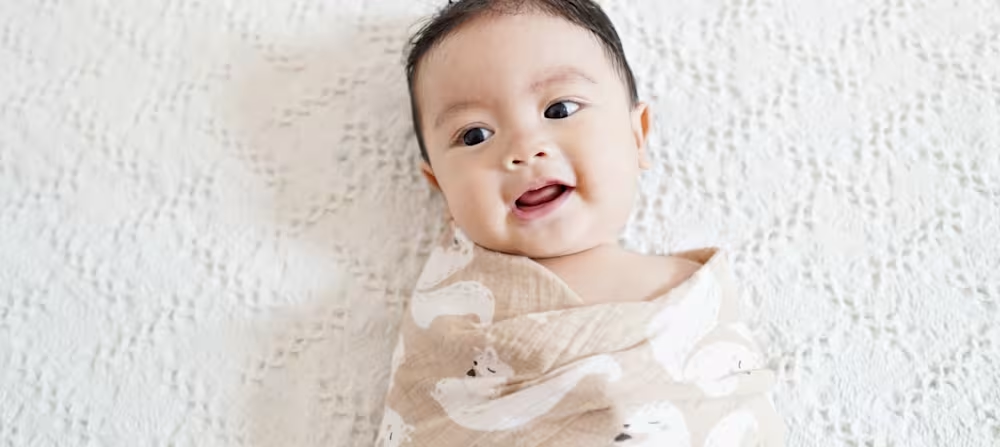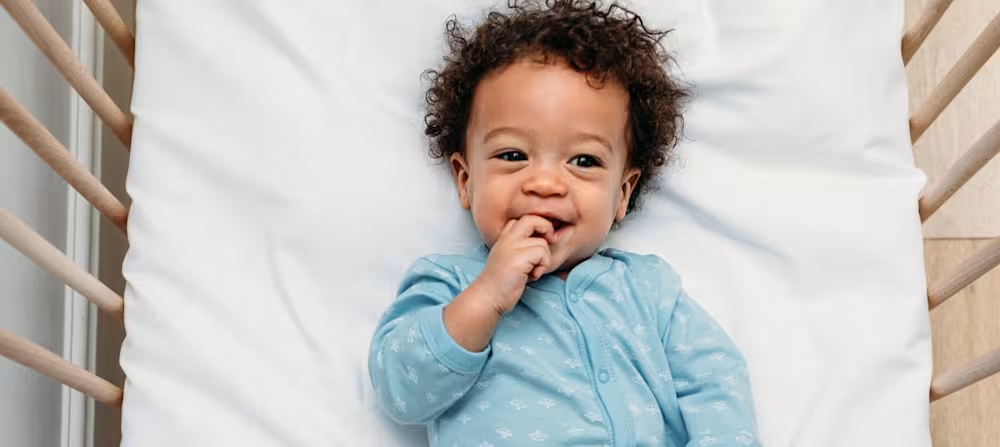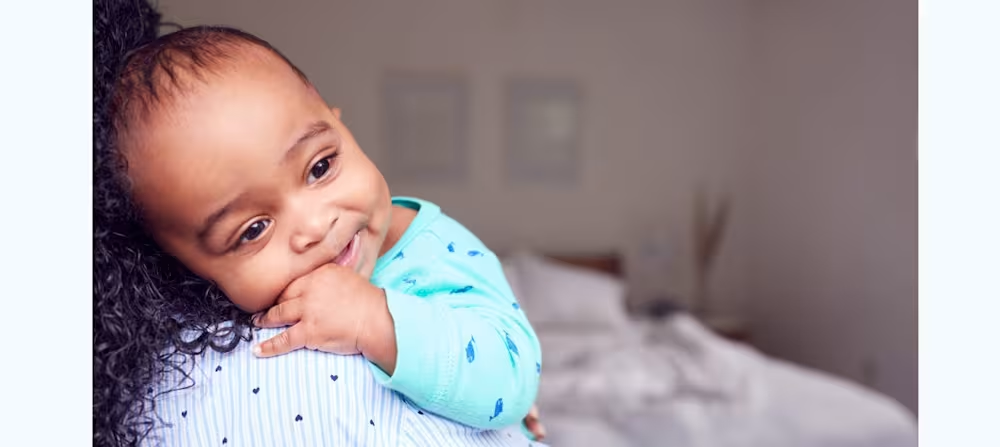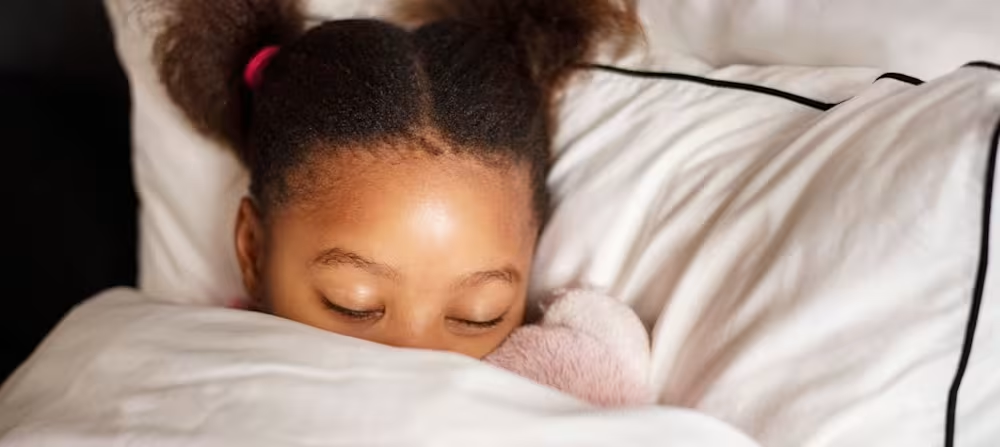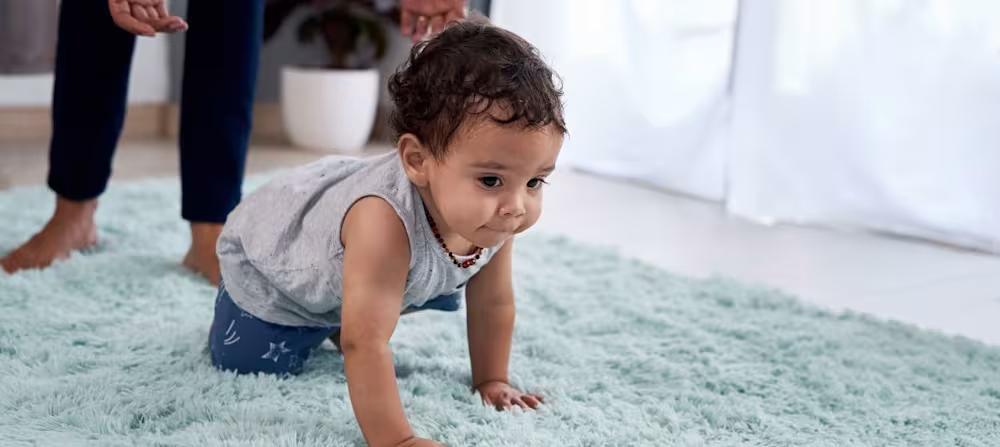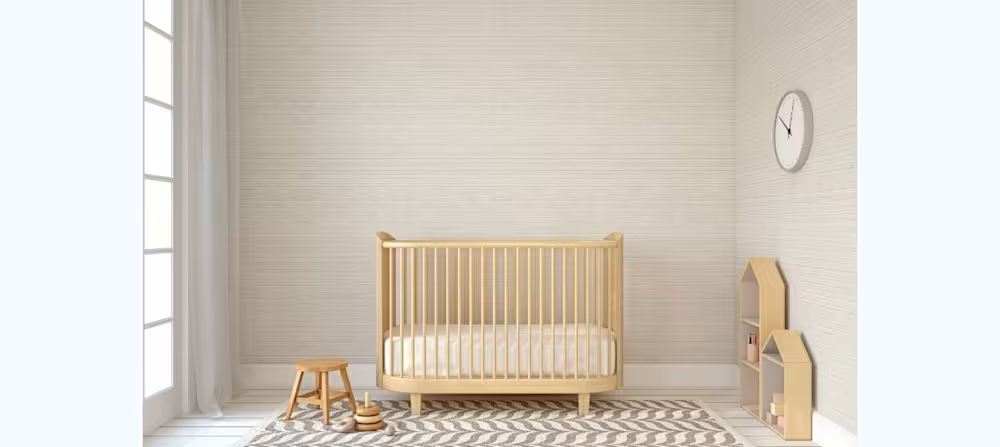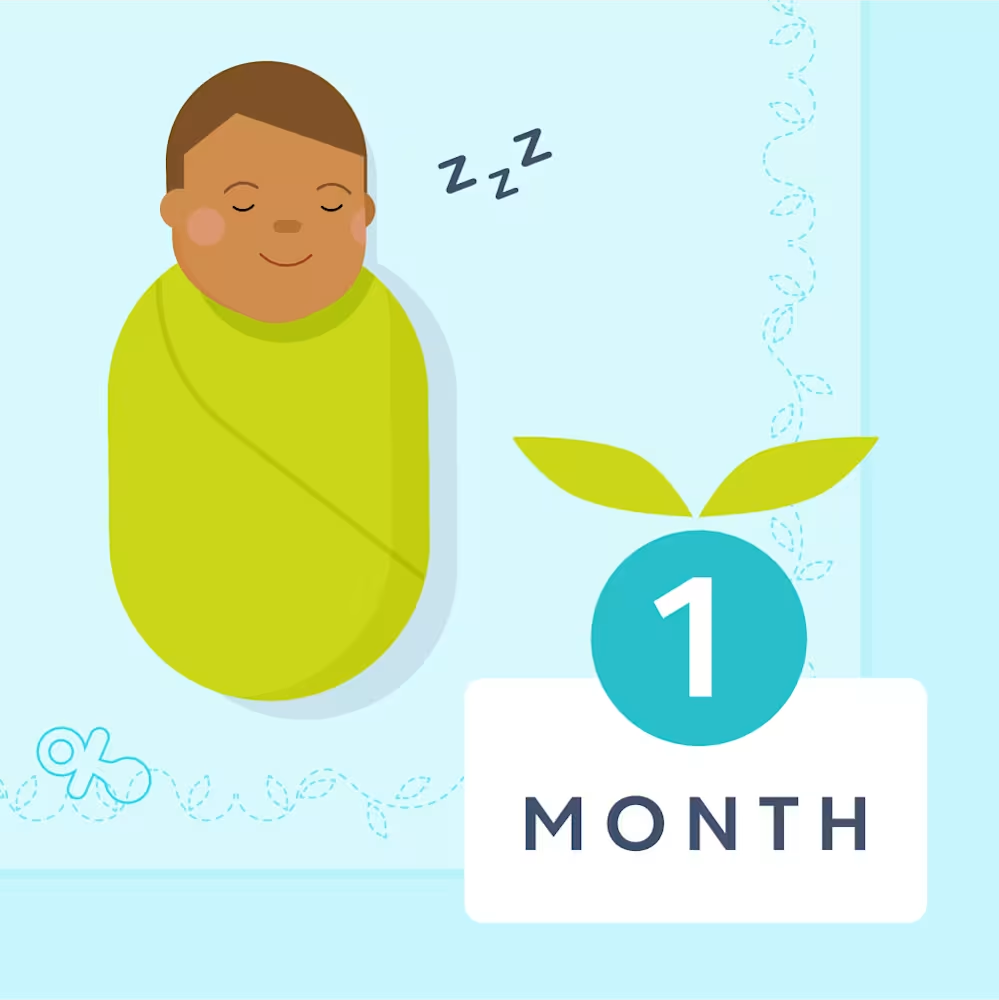Crib safety: a guide to preparing a safe sleeping environment
Updated Oct 16, 2025

As your little one is going through different stages like moving to a crib or , you may be unsure about safety and sleep, you’re not alone. It’s common to hear contradictory advice from well-meaning friends and family as sleep-safe guidance continually evolves. Great news for you: we’ve rounded up the most current information from the experts regarding crib safety, right here.
What is crib safety?
Safe sleep guidance has changed quite a bit in the last few decades. Since 1992, the “Back to Sleep” public health campaign (now called Safe to Sleep []) has urged caregivers to place infants down to sleep on their backs — a big departure from the common practice of placing babies to sleep on their stomachs. The campaign has been successful in raising safe sleep awareness. Sudden Infant Death Syndrome (SIDS) rates have decreased by almost 50% in the United States since the start of the campaign.
Additionally, the American Academy of Pediatrics (AAP) has continued to provide updated guidance to caregivers and medical professionals to reduce sleep-related infant deaths. In June 2022, the AAP’s Task Force on SIDS revised the previous 2016 guidelines []. Research still supports placing babies “back to sleep” — meaning infants should be set down to sleep on their backs on a flat (non-inclined) surface, without loose blankets, pillows, or other soft objects in the baby’s sleep space.
7 tips for crib safety
to consider when placing your baby in their crib to sleep or determined — the non-negotiables. Note that these tips apply to babies in the first year of life unless otherwise noted.
Back is best
Check the mattress
Don’t use bumpers
Keep the crib bare
Lower the crib mattress
Watch cords and strings
Avoid weighted products
Find more details below:
Tip #1: Back is best
Make sure to get the grandparents on board for this one. When it comes to sleep time, ensure that all caregivers know to lay your baby down on their back on a flat surface to reduce the risk of suffocation and entrapment in their sleep space.
If your baby is now able to roll both ways (front to back and back to front), they can be allowed to remain on their stomach or side if they’ve moved into that position on their own (after you’ve placed them down on their back).
Tip #2: Check the mattress
The crib mattress should be flat and firm. Inclines over 10 degrees aren’t safe, so skip the wedges and don’t place anything under the mattress to elevate one side. You’ll know it’s firm enough if it doesn’t change its shape when you lay something on it.
Ensure the mattress is designed for your specific crib and is tight-fitting. It should be the same size as the crib — without gaps to trap arms, body, or legs. Try the “two-finger test” if you have any doubts: you shouldn’t be able to fit more than two fingers in between the mattress and sides of the crib.
Tip #3: Don’t use bumpers
Stay away from bumper pads. They increase the possible risk of suffocation, strangulation, or entrapment for infants. Toddlers might also use bumper pads to help them climb and fall out of the crib. The Safe Cribs Act [], which was signed into law in May 2022, bans the sale of crib bumpers in the United States.
Tip #4: Keep the crib bare
Pillows, loose blankets, mattress toppers, stuffed animals, and other soft objects should not be placed in an infant’s crib as they’re a suffocation hazard. Your baby can still be kept cozy, though; swaddles or sleep sacks can be used for warmth and comfort. Be sure to transition away from the swaddle when your baby shows signs of starting to roll.
Tip #5: Lower the crib mattress
Unfortunately, injuries from crib falls are fairly common. Here’s the good news, though: falls are often avoidable when the crib mattress is kept at the lowest appropriate setting.
When it comes to adjusting the position of the mattress, you’ll want to stay ahead of developmental milestones. Lower the crib mattress before your baby learns to sit, so they can’t fall out either by leaning against the side or by pulling over it. Similarly, move the mattress to its lowest position before your child starts to stand.
The AAP recommends when they’re 35 inches tall to avoid injuries related to climbing out of the crib.
Tip #6: Watch cords and strings
Cords, necklaces, and strings are a strangulation hazard for babies and young children. It’s best to keep your child’s crib or bed away from windows so blinds or drape cords aren’t within reach. In fact, the Consumer Product Safety Commission (CPSC) recommends using cordless window coverings when possible. Likewise, keep any cords from monitors and away from your child’s sleeping area.
Tip #7: Avoid weighted products
Weighted blankets, weighted sleepers, and weighted swaddles should not be used on or placed near an infant. In their newly revised recommendations [], the AAP notes that these are not safe and thus not recommended.
AAP crib safety standards
The AAP recommends that sleep surfaces adhere to federal safety standards set by the CPSC.
Here’s what the AAP wants you to know [] when choosing a crib:
Cribs that were manufactured before 2011 should not be used.
Refrain from using cribs that are broken, modified, or have a drop-side design.
Crib slats are closer now. They should be no more than 2 3/8 inches apart to help prevent a baby’s body from fitting through the slats.
All of the screws, brackets, and hardware should be properly installed. Avoid cribs with missing, loose, broken, or improperly installed parts (even if they have been fixed). Do not attempt to fix broken cribs.
Corner posts should be flush with the railing (or really high like a canopy bed), so your child's clothing cannot catch.
Don’t use a crib with a decorative cutout in the headboard or the footboard, as they pose a risk of the baby’s head or limbs getting trapped.
How to make a crib safe
Most children will be left unattended for long stretches in their crib, so parents will want to ensure that both the crib furniture itself and the space within the crib don’t pose safety risks.
In a nutshell: use a crib made after 2011, and always place your baby to sleep on their back. The mattress should be firm, flat, and tight-fitting. Keep your baby’s sleep environment clear of everything but a fitted sheet.
Lastly, if sleeping in general is a struggle, we have all the tips you need if your .
Takeaway
Safe sleep research continues to support placing babies “back to sleep” — meaning infants should be set down to sleep on their backs on a flat (non-inclined) surface, without loose blankets, pillows, or other soft objects in the baby’s sleep space.
Important safety measures to consider when it comes to cribs include: putting your baby on their back for sleep, checking the mattress, avoiding bumpers, keeping the crib bare, lowering the crib mattress as your child reaches developmental milestones, removing cords and strings from near the sleep space, and avoiding weighted products.
The AAP also has specific recommendations for how to choose a crib that is safe, such as: choose a crib made after 2011, refrain from using broken, modified cribs, avoid drop-sided cribs, make sure all hardware is properly installed, and avoid any cribs with missing, loose, broken, or improperly installed parts (even if they've been fixed).
Crib safety FAQ
Share article:
Note: The content on this site is for informational purposes only and should not replace medical advice from your doctor, pediatrician, or medical professional. If you have questions or concerns, you should contact a medical professional.
8 Sources
Share article:
